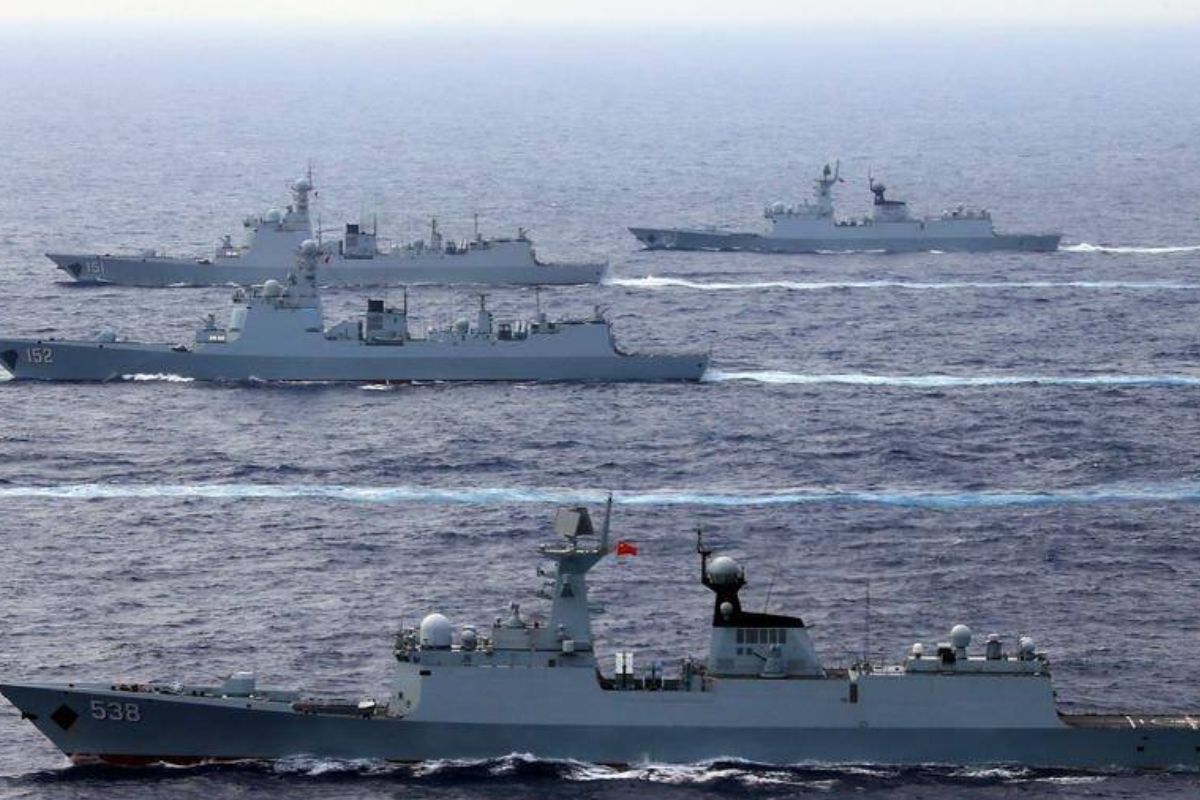Tensions Escalate as Chinese Warships Approach Australian Waters

A recent sighting of Chinese vessels near Australian waterways raised fears about Beijing’s military ambitions, sparking new warnings about the growing regional risk.
The news comes after a heated come across involving an Australian P-8A Poseidon surveillance aircraft and Chinese fighter fighters jet, which further strained diplomatic ties.
The Australian Defence Force (ADF) has condemned the actions of the Chinese military, describing them as “unsafe and unprofessional.”
Table of Contents
ToggleA Growing Threat?
Just days after Australian forces participated in joint maritime drills with the United States, Japan, and the Philippines in the West Philippine Sea, a flotilla of Chinese warships—including a Type 55 Renhai-class cruiser, a Type 054A frigate, and a military supply vessel—was detected in waters to Australia’s north. This latest move highlights the vulnerability of Australia’s supply routes and maritime security.
David Uren of the Australian Strategic Policy Institute (ASPI) warns that Australia’s “limited resources and finite defence capability” make it crucial to focus on securing sea lines of communication. “An adversary could implement military coercion at a distance with threats against our trade and supply routes,” he cautioned.
Diplomatic Standoff
Beijing has defended its actions, insisting that Australia is engaging in provocations and infringing on China’s security interests. Chinese Foreign Ministry spokesperson Guo Jiakun stated that Australia must “cease its infringement and provocation and stop undermining peace and stability in the South China Sea.”
Chinese state media has also pushed back, accusing Australia of hypocrisy by sending warships and aircraft into contested waters while decrying similar actions from China. “Their goal is to dominate international public opinion while diverting attention from their own actions,” said Chinese military expert Zhang Junshe.
Military Implications
Experts warn that Australia’s military strategy must evolve as China expands its naval presence and capabilities. The deployment of Chinese warships near Australia indicates a change in global military dominance and an increased risk of conflict in the Indo-Pacific region.
The Chinese navy’s current work serve as a stark reminder that regional security is a delicate issue. Defence Minister Richard Marles stressed that, while military encounters are expected, they must be safe and professional, as was not the case in the most recent surveillance aircraft incident.
The Bigger Picture
Geopolitical observers caution that such incidents are only a part of a larger struggle for influence in the Indo-Pacific. While Beijing makes connections with Pacific island governments through economic and security concessions, Australia will have to balance a challenging tightrope act between ongoing economic links with China and tightening security ties with Washington.
“We must ensure that international law is respected, and that smaller nations are not coerced into submission,” said Minister for International Development and the Pacific, Pat Conroy. “We cannot allow a world where might makes right.”
What’s Next?
With tensions rising, questions remain about how Australia and its allies will respond. The presence of Chinese warships in the region serves as a clear indication that Beijing is not backing down, and the coming months could see further provocations.
As ASPI’s latest security report warns, “A dangerous combination of complacency and tolerance could emerge if we assume conflicts are distant. The reality is that few saw either of the current wars as imminent when they started. We must not make the same mistake in our region.”
Published by Amanda Mills
I’m a Web Designer, Freelance Writer, and Digital Marketer with a study background in Logic, Philosophy, and Journalism. I’ve always had an unwavering passion View more posts







